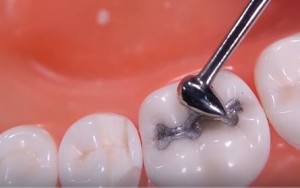 The possible health risks associated with mercury vapor release makes dental amalgam a controversial restorative material. While some dentists favor a mercury-free practice, others continue to use amalgam as dental fillings. After all, since the 1800s it’s been an effective restorative tool for tooth decay.
The possible health risks associated with mercury vapor release makes dental amalgam a controversial restorative material. While some dentists favor a mercury-free practice, others continue to use amalgam as dental fillings. After all, since the 1800s it’s been an effective restorative tool for tooth decay.
Until now, there’s no conclusive scientific evidence for mercury poisoning in humans due to dental amalgam. As such, certain dental organizations consider it safe to use.
Strong, durable, and versatile
Dental amalgam is usually referred to as “silver fillings” or “mercury fillings.” About 43 to 54 percent of dental amalgam is elemental liquid mercury. The rest of the material consists of a powder containing copper, tin, silver, and sometimes indium, palladium, or zinc.
This concoction of various metals was first formulated and used for dental procedures in France. It looks similar to silver, hence the popular moniker.
Easy to apply
The dentist can only apply amalgam after preparing the cavity, which comes after drilling and taking away parts of the tooth, and shaping the cavity. The dentist places the putty into the cavity in a softened form.
Dentists perform the mixing, following safety protocols for their safety as well as that of the patient on the chair. Once inside the cavity, the putty hardens, and it’s then shaped and configured to fit with the natural row of teeth.
Requires proper disposal
Extracted teeth that contain amalgam fillings don’t go into regular waste bins. Instead, there are centers where the removal occurs. Dental organizations acknowledge the real threat of dental waste containing mercury to the environment. Experts from Discount Disposables promote amalgam recycling, proper disposal, and environmentally sustainable handling of amalgam waste.
Dental practices should install amalgam separators for proper disposal of dental waste and mercury recycling. While dental amalgam is still being used in dentistry, there should be more studies on its viability and safety.

